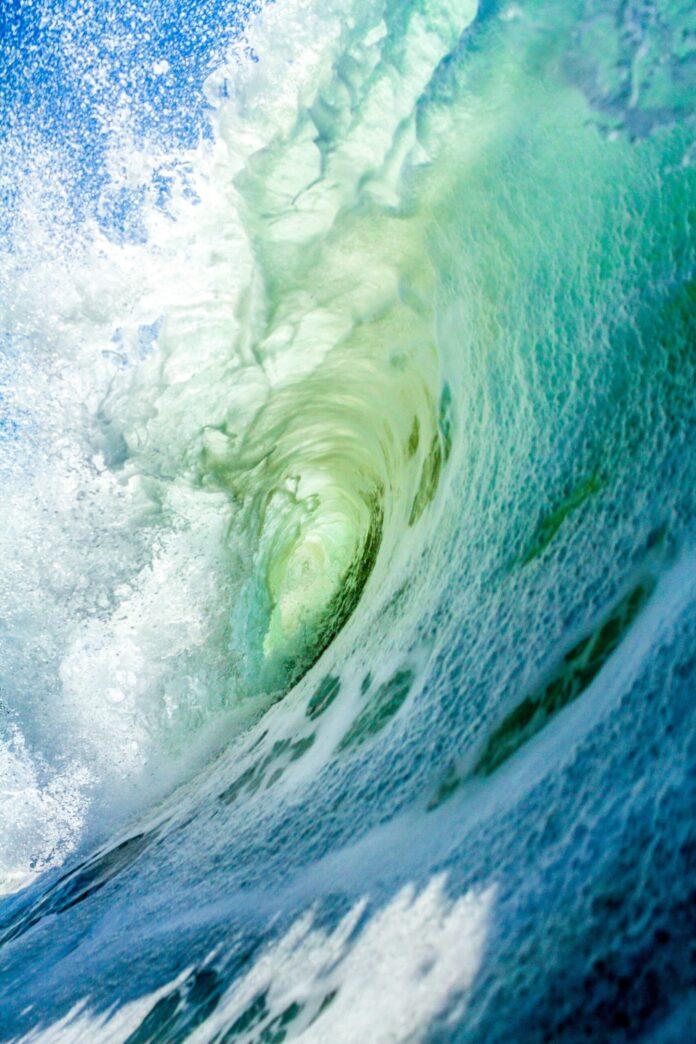The vast expanse of our oceans holds a treasure trove of untapped energy in the form of rhythmic waves. Wave energy, a clean and renewable source, offers a promising solution to our growing energy needs while mitigating the environmental impacts of fossil fuels.
What is Wave Energy?
Wave energy is the kinetic energy contained within ocean waves. This energy is generated by the wind blowing over the water’s surface, creating ripples that grow into powerful waves.
Wave energy technologies capture this motion and convert it into electricity, providing a sustainable and predictable source of power.
How Wave Energy Works (Illustrated)
- Wave Motion: Ocean waves create oscillating movements in the water.
- Energy Capture: Wave energy converters (WECs) capture this motion using various mechanisms.
- Mechanical Energy: The captured motion is converted into mechanical energy (e.g., rotating shafts, oscillating pistons).
- Electricity Generation: The mechanical energy drives an electrical generator, producing electricity.
- Transmission: The electricity is transmitted to shore via underwater cables, ready for distribution.
Types of Wave Energy Converters (In-Depth)
- Point Absorbers:
- These are floating structures that move up and down with the waves, capturing the energy through hydraulic systems or linear generators.
- Examples: The PowerBuoy [invalid URL removed] by Ocean Power Technologies and the Wavebob.
- Advantages: Can operate in various water depths, relatively simple design.
- Limitations: May be less efficient in capturing energy from long-period waves, susceptible to damage in extreme weather conditions.
- These are floating structures that move up and down with the waves, capturing the energy through hydraulic systems or linear generators.
- Attenuators:
- These are long, snake-like structures that lie parallel to the waves, flexing as the waves pass over them, generating hydraulic pressure or driving electrical generators.
- Examples: The Pelamis Wave Energy Converter and the Wave Dragon.
- Advantages: Efficient at capturing energy from long-period waves, suitable for offshore deployment.
- Limitations: High construction and installation costs, may impact navigation and marine traffic.
- These are long, snake-like structures that lie parallel to the waves, flexing as the waves pass over them, generating hydraulic pressure or driving electrical generators.
- Oscillating Water Columns:
- These are partially submerged chambers where waves force air in and out, driving a turbine connected to an electrical generator.
- Examples: The LIMPET [invalid URL removed] by Wavegen and the Oceanlinx system.
- Advantages: Simple and robust design, low maintenance requirements.
- Limitations: Efficiency can be affected by wave direction and frequency, potential noise pollution.
- These are partially submerged chambers where waves force air in and out, driving a turbine connected to an electrical generator.
- Overtopping Devices:
- These create a reservoir that waves fill, creating a height difference that drives turbines as the water flows back out to sea.
- Examples: The WaveRoller and the SSG Wave Energy Converter.
- Advantages: Can operate in nearshore or onshore locations, less susceptible to damage from storms.
- Limitations: May require significant coastal modifications, potential visual and environmental impacts.
- These create a reservoir that waves fill, creating a height difference that drives turbines as the water flows back out to sea.
Pioneering Wave Energy Projects
- The Aguçadoura Wave Farm (Portugal): This was the world’s first commercial wave farm, utilizing Pelamis WECs. Though it faced challenges and was eventually decommissioned, it provided valuable lessons for future projects.
- The Wave Hub [invalid URL removed] (UK): A grid-connected offshore facility designed to test and demonstrate various wave energy technologies. It has supported the development of several innovative WECs.
The Road Ahead: Challenges & Opportunities
While wave energy holds immense potential, several challenges need to be addressed for widespread adoption:
- Harsh Marine Environment: Saltwater, storms, biofouling, and corrosion pose significant challenges to the durability and longevity of WECs. Ongoing research focuses on developing materials and coatings that can withstand these harsh conditions.
- Environmental Concerns: Potential impacts on marine ecosystems, including changes in wave patterns, noise pollution, and effects on marine life, need to be carefully assessed and mitigated.
- High Costs: Wave energy technology is still in its early stages, and the costs of development, installation, and maintenance are relatively high. Achieving cost competitiveness with other renewable energy sources will require further technological advancements and economies of scale.
- Grid Connection: Transmitting electricity from offshore wave farms to the onshore grid can be challenging and expensive. Solutions include developing efficient underwater cables and exploring the potential of energy storage systems.
The Future is Bright
Despite these challenges, wave energy remains a beacon of hope in our quest for a sustainable energy future. Ongoing research and development are leading to:
- Improved WEC Designs: More efficient, durable, and cost-effective converters are being developed, incorporating advanced materials, control systems, and power electronics.
- Hybrid Systems: Combining wave energy with offshore wind farms can optimize energy production and grid stability, making both technologies more economically viable.
- Advanced Materials: The development of new materials, such as composites and advanced coatings, is improving the durability and performance of WECs in the harsh marine environment.
- Scaled Deployment: As technology matures and costs decrease, we can expect to see a transition from pilot projects to large-scale commercial wave energy farms, contributing significantly to the global renewable energy mix.

